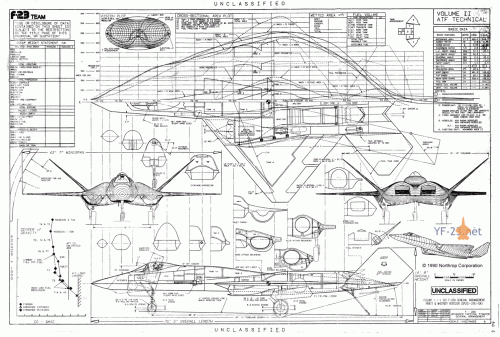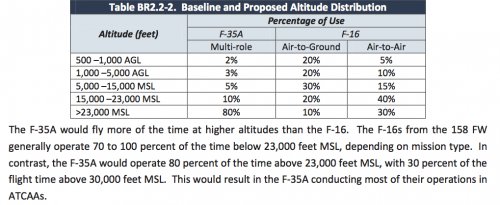Overheard in the cafeteria at Bethesda on 2 February, 2015:
"We spent eight (8) years and 400 million dollars on twelve (12) versions of .1 software trying to get the transonic roll-off and buffet out of the aircraft...and now we're back to square one."
F-35A High Angle of Attack Operational Maneuvers
14 January 2015
Test Aircraft: AF-2, Test 715, Flight 505, Configuration 10-001B (Clean Wing), 0.1-v12.006 (R33.1)
OBJECTIVE
The test was designed to stress the high AoA control laws during operationally representative maneuvers utilizing elevated AoAs and aggressive stick/pedal inputs. The evaluation focused on the overall effectiveness of the aircraft in performing various specified maneuvers in a dynamic environment. [...]
........
Now some perspective from CFDI on 12 March, 2015 http://www.pogo.org/our-work/straus-military-reform-project/weapons/2015/not-ready-for-prime-time.html#wing_drop_concerns
Wing Drop Concerns
Last year (2013) DOT&E reported that every F-35 variant struggled with uncommanded “wing drop” when maneuvering hard at high subsonic and transonic speeds. This is particularly dangerous because uncommanded—which is to say, uncontrolled—wing drop can result in crashes and an inability to outmaneuver attacking planes or missiles in combat.
This year’s report notes that all three variants needed “modifications of the control laws to control the effects of transonic flight [wing drop] and buffet maneuvering.” Unfortunately, the needed control law modifications will reduce the maneuverability of the F-35, only exacerbating the plane’s performance problems in this area. The F-35C’s wing drop problem is “worse than other variants” and future testing will incorporate spoilers installed in the wings to address the problem. Lockheed Martin publicly reported designing add-on spoilers in 2009, and DOT&E described plans to consider how to incorporate these new spoilers in the test plan in its 2012 report. However, add-on spoilers, such as those added to the F-18E/F to address a similar problem, almost certainly will decrease all-around stealth as well as increase weight and drag, thereby further decreasing maneuverability, acceleration, and range. Moreover, much of the extensive maneuver testing needed to validate fixes to the wing-drop problem is currently impossible due to the speed and g limits imposed by the continuing engine fan-rubbing problem (described below).
Heavy buffeting during high angle of attack maneuvers (such as during dogfighting, outmaneuvering threat missiles, and flying close support) has been reported as a serious ongoing problem with the F-35 since at least 2009. Such buffeting can cause fatigue cracks that lead to structural failure and can degrade weapons aiming, missile evasion, and dogfighting ability.
Testing to investigate the impact of buffet and transonic roll-off (TRO or “wing drop”) on the helmet-mounted display and offensive and defensive maneuvering found that “buffet affected display symbology, and would have the greatest impact in scenarios where a pilot was maneuvering to defeat a missile shot.” Buffeting also degrades the gyroscopes in the inertial platforms which are essential for flight control, navigation, and weapons aiming. DOT&E explained that this was an ongoing issue: “In heavy buffet conditions, which occur between 20 and 26 degrees angle of attack, faults occurred in the inertial measurement units (IMUs) in the aircraft that degraded the flight control system (two of three flight control channels become disabled), requiring a flight abort.” This limitation to maneuverability is an obstacle that must be overcome and any remedy must be validated by additional testing before 2B release.
Now back to the War is Boring report...
Buffet & Transonic Rolloff (TRO)
Despite concerns early in the program regarding buffet, it was not found to be detrimental during this mission. It was actually favorable when encountered because it provided a great cue of energy, similar to the F-15. Buffet was never encountered with the bandit on-axis and off-axis symbology was steady regardless of buffet level. The jet was below buffet energy levels when gunning the bandit and the aircraft was unloaded when shooting the bandit on-axis with missiles, ie across the circle. (The same pilot conducted the HMO readability tests for buffet conditions). A more difficult problem is ensuring gun pipper accuracy, especially considering the new "swimming" filters but that was beyond the scope of this test (no filters were available on the FS aircraft). TRO was never encountered during the BFM engagements.
Soo... They successfully got rid of the buffet and TRO. But they had to turn the aircraft into a dog to do it. Note the fixes Doc Nelson proposes:
CONCLUSION AND RECOMMENDATIONS
R1: Increasing pitch rate and available Nz would provide the pilot more options, especially considering the inherent energy deficit.
R2: Consider increasing alpha onset.
R3: Consider increasing the beginning of the blended region to 30 degrees or greater.
R4: Consider increasing pilot yaw rate control authority.
All of that induces and magnifies buffet and TRO. Yep. They're in a pickle.

